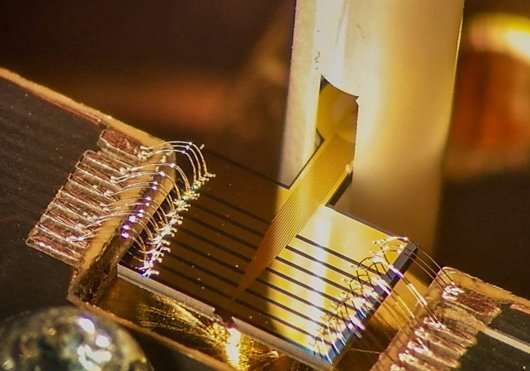
How can we combat data theft,
which is a real issue for society? Quantum physics has the solution. Its
theories make it possible to encode information (a qubit) in single particles
of light (a photon) and to circulate them in an optical fiber in a highly
secure way. However, the widespread use of this telecommunications technology
is hampered in particular by the performance of the single-photon detectors.
A team from the University of Geneva (UNIGE), together with the company ID Quantique, has succeeded in increasing their speed by a factor of twenty. This innovation, published in the journal Nature Photonics, makes it possible to achieve unprecedented performances in quantum key distribution.
Buying a train ticket, booking a taxi, getting a meal delivered: these are all transactions carried out daily via mobile applications. These are based on payment systems involving an exchange of secret information between the user and the bank. To do this, the bank generates a public key, which is transmitted to their customer, and a private key, which it keeps secret. With the public key, the user can modify the information, make it unreadable and send it to the bank. With the private key, the bank can decipher it.
This system is now threatened by the power of quantum computers. To resolve this, quantum cryptography—or quantum key distribution (QKD)—is the best option. It allows two parties to generate shared secret keys and transmit them via optical fibers in a highly secure way. This is because the laws of quantum mechanics state that a measurement affects the state of the system being measured. Thus, if a spy tries to measure the photons to steal the key, the information will be instantly altered and the interception revealed.
Current limitations
One limitation to the application of this system is the speed of the single-photon detectors used to receive the information. In fact, after each detection, the detectors must recover for about 30 nanoseconds, which limits the throughput of the secret keys to about 10 megabits per second. A UNIGE team led by Hugo Zbinden, associate professor in the Department of Applied Physics at the UNIGE Faculty of Science, has succeeded in overcoming this limit by developing a detector with better performance. This work was carried out in collaboration with the team of Félix Bussières from the company ID Quantique, a spin-off of the university.
"Currently, the fastest detectors for our application are superconducting nanowire single-photon detectors," explains Fadri Grünenfelder, a former doctoral student in the Department of Applied Physics at the UNIGE Faculty of Science and first author of the study. "These devices contain a tiny superconducting wire cooled to -272°C. If a single photon hits it, it heats up and ceases to be superconducting for a short time, thus generating a detectable electrical signal. When the wire becomes cold again, another photon can be detected."
Record performance
By integrating not one but fourteen nanowires into their detector, the researchers were able to achieve record detection rates. "Our detectors can count twenty times faster than a single-wire device," explains Hugo Zbinden. "If two photons arrive within a short time in these new detectors, they can touch different wires and both be detected. With a single wire this is impossible." The nanowires used are also shorter, which helps to decrease their recovery time.
Using these sensors, scientists were able to generate a secret key at a rate of 64 megabits per second over 10 km of fiber optic cable. This rate is high enough to secure, for example, a videoconference with several participants. This is five times the performance of current technology over this distance. As a bonus, these new detectors are no more complex to produce than the current devices available on the market.
These results open up new perspectives for ultra-secure data transfer, which is crucial for banks, health care systems, governments and the military. They can also be applied in many other fields where light detection is a key element, such as astronomy and medical imaging.

 Previous page
Previous page Back to top
Back to top







